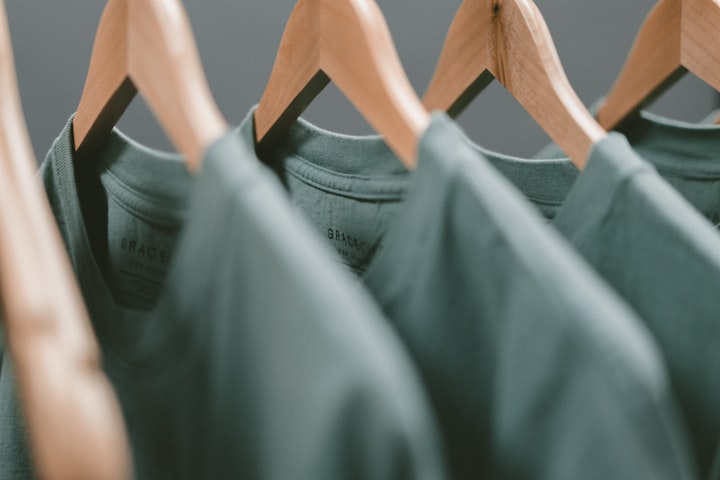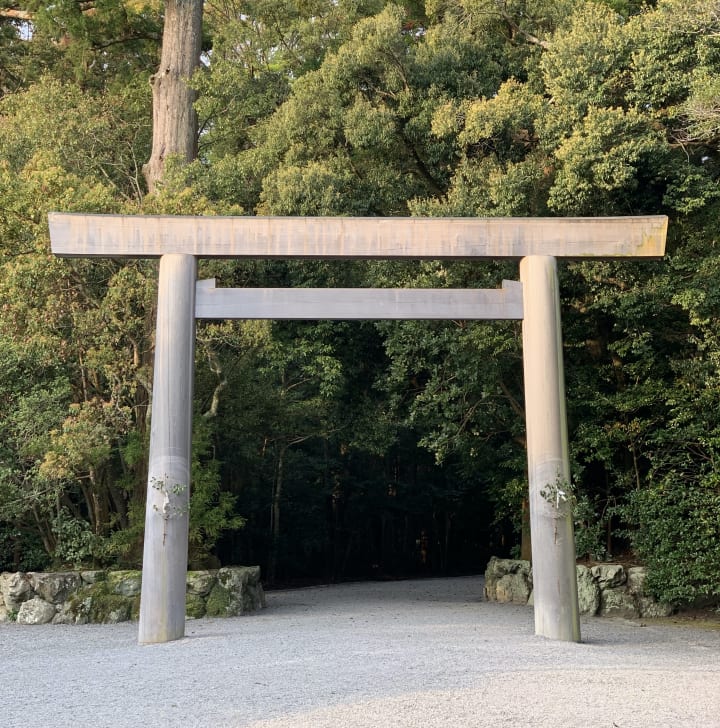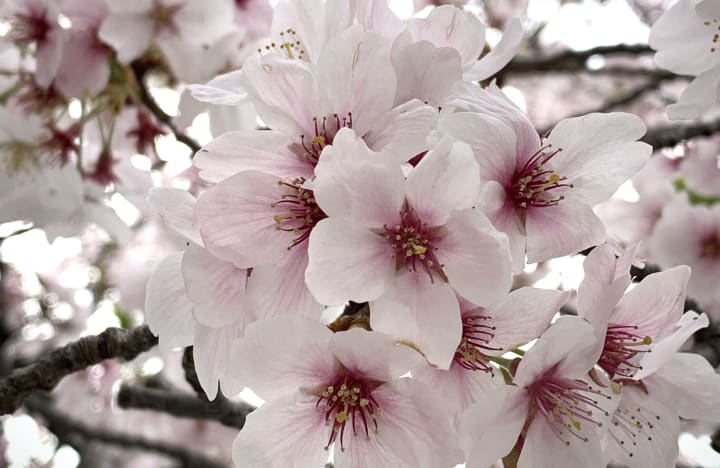The Point of Purchasing: How Spring Cleaning Really Begins at the Shop
Better buying and respect for the objects in our lives

The big clean
I no longer do spring cleaning.
No, I have not decided to become a hoarder. But for many years now, my spring cleaning has become a December o-souji, which is basically the Japanese term for a big or important cleaning. The new year o-souji is a deep house-cleaning, one-part practical clean-up and one-part ritual cleansing — symbolically ridding the house of bad luck from the past year, and sprucing it up for the spirits that will bring good luck in the next.
I am not Japanese, but I lived in Japan for 15 years. And after spending enough cozy New Year’s Eves with a Japanese family, some traditions seep into your bones. Japan is also where I met my wife, who is Taiwanese. Her traditions call for a similar major house-cleaning before the new year. But in Taiwan, this means the lunar New Year rather than the first of January. As a result, the two of us now practice a combination of the two, which basically means a flurry of deep cleaning around the New Year and then another, easier cleanse before the lunar New Year.
Then we get to be slobs all through spring.
The other Kondo-ism
We lived in Japan at the same time the organizing-guru Marie Kondo was finding converts. Yet somehow, we only heard about her after she was picked up by Netflix. Nonetheless, like so many people, we were instantly hooked and, while preparing for our eventual move to London, we walked around our apartment gleefully deciding which things “sparked joy” enough to make the expensive move half-way around the world.
However, for me it has always been that other, less-often-repeated Kondo-ism that seemed more important — showing gratitude to those things that you have chosen to give away. For many in the West, I suspect saying thank you to your broken spatula probably felt like a bridge-too-far. But the truth is that this idea is nothing new. In fact, it is very old.
Kondo’s practice of giving thanks is not a vaguely spiritual, touchy-feely sentiment that she invented. Nor is it there to ease your guilt about tossing things in the bin. It is a deeply held Japanese belief.

One of my closest friends in Japan once told me how was admonished by his father for carelessly tossing down a pen after he was finished with it. His father told him in no uncertain terms that the pen was his brother and, as such, deserved to be treated with respect. He took that lesson to heart, and later taught it to me.
Animism is the central tenet of the widely practiced Shinto religion. In Shinto, places, trees, mountains, rocks, and even household objects might be imbued with a spirit, making them all worthy of respect. Or at the very least our decency. While this idea may have faded somewhat in the modern era, it is still very much an undercurrent of Japanese life — alive in religion, folk-beliefs and represented frequently in manga and anime.
For me, it was a lesson that somehow already fit with my feelings about the world. And you don’t have to be a practicing Shintoist, or believe in animating spirits, to understand the concept of respecting and appreciating the objects around us. If we don’t see our belongings as disposable, we can better appreciate them for their use — and expect more of them as a result. That, in turn, could very well lead us to a world with less waste.
I suspect I would make a better Shintoist than a Buddhist. The truth is, I like my belongings and see no point in freeing myself from my love of earthly objects. Not because I am materialistic or acquisitive, but because some of those belongings, well…they make me happy. They have a place in my life which makes them part of my memories and emotional landscape. In other words, as Marie Kondo would say, they “spark joy.”
Should we therefore keep everything we buy? No. But I believe that spring cleaning begins at the point of purchase.
Avoiding the ephemeral
My carbon footprint is far from perfect, I’ll be the first to admit it. But when it comes to the objects I own, I hate waste. I want to own things that last, rather than buy the same plastic product over and over and send each newly broken one to the landfill. Generally speaking, this also leads to owning more attractive things. Re-used glass jars look more pleasant on the shelf than plastic containers. Solid wood bookshelves wear more beautifully than quickly deteriorating Billy shelves.
Yes, this practice can be more expensive. But not always. Quite often, if you look at the long-term costs, the one-time purchase of a quality item can save you money.
Take frying pans, for example. I have lost track of how many cheap non-stick frying pans I have purchased in the past. Even used with care, the non-stick coating seldom lasts more than two years. That means that every two years, you are tossing out another frying pan.
A good quality cast-iron pan, on the other hand, might cost £70, but with proper care it will remain usable, quite literally, for the rest of your life. And maybe the lives of your children. How many cheap frying pans would you buy in that time? Certainly more than £70 worth.
The same holds true for clothing
Fast-fashion is an evil all its own, and countless articles have been written about the immoral manufacturing practices and the mountains of fabric turned into waste in the name of cheap clothing. I’ve been guilty of buying these clothes, as well. Not because I am obsessed with having the latest look, but because shops like Zara sell sharp-looking, inexpensive clothes. And who doesn't want to look sharp?
The problem is that, while fast-fashion clothing might look sharp in the shop or on the website, it is shockingly poorly made. When I realised that my once-fashionable shirts were falling apart (after just six months in some cases, even when I was careful to follow the arcane washing instructions) I made an effort to stop supporting the disposable garment industry. At the same time, I was realising that clothing I had bought from smaller brand-name shops, such as one called TakaQ in Tokyo, has sometimes lasted me 10 years. As I type this now, I am wearing a pullover that is about 15 years old, and it looks almost exactly the same as the day I bought it. No exaggeration.
That is the difference between well-made clothing and fast-fashion.
I understand of course that it can be difficult to judge which pieces will last and which will not. But good stitching, finished edges, and solidly-sewn buttons are some good indicators of a quality piece of clothing. Next time you pick something up in the shop, look at the inside as much as the outside. Cherry blossoms may be appreciated for their beauty and brevity but clothing and kitchenware should not be.

Qualifying quality
There are two sides to the quality coin, and perhaps thinking about them can help us make better purchases. One is usability. And the other is appreciation. They work together.
Usability
I am not someone who babies his belongings. I expect my clothes to be reasonably durable and require an average amount of care. I want to use the furniture I own, not have conversations about it. I've never understood the point of an "accent chair" or a plastic runner over a carpet. I expect sofas, chairs and carpets to become worn over time, but not fall apart. Essentially, I believe that it is not worth owning objects that look great but cannot stand up to regular use.
This not only speaks to the longevity of the objects in our lives, but also gives us a kind of permission to feel free about using them. Our belongings are at their best when fulfilling their purpose. If they are too frail to function, they are nothing but knick-knacks. And no one — aside from that one great-aunt with the little unicorn figurines, bless her — wants a house full of knick-kancks.
Appreciation
Appreciation comes in many forms. It can mean an appreciation of something that is beautiful. It can also mean appreciation of the practical function of a thing. Personally, I think good design, in the engineering sense, has a beauty all its own. Things don’t need to be ornate — the simplicity and cleverness of a product’s design can give me a sense of appreciation, too. I think we can fill our lives with objects that are both beautiful and functional, or at least make the effort.
Let’s face it, the rising tide of cheap plastic products sold on Amazon has become preposterous. Even dangerous. When we find something for £6 that claims to do the same job as one that costs £30, we call it a bargain. It is altogether too tempting to say, “It’s only £6. If it breaks I’ll just buy another one.” I’ve succumbed to the same logic. But this is exactly how our oceans and land are filling up with plastics, and micro-plastics are finding their way into our food-chain and bodies.
Furthermore, it has a diminishing effect on the way we see the world. We find ourselves surrounded by the disposable — not even caring whether the things we own are worthy of their own function. We are simply collecting junk, which arrives at the front door in a cardboard box and goes back out again in a black plastic bag. Thus “cleaning” becomes synonomous with “throwing away.”
Purchasing quality things means you will keep them longer, get more use out of them, appreciate them more, and — if and when the time comes to give them up — you will honestly want to thank them for their use.
Like I said, spring cleaning begins at the point of purchase.
It’s not all about the money
Now, I’m aware that much of this is easily said. Not everyone can afford to buy better things. That is the reality, and sadly, people living in poverty are cornered into a system that forces them to repeatedly waste money on substandard products that are destined to become garbage. But that’s a social issue for another article. Quality goods shouldn’t be the premium; they should be the norm.
But as I said, quality isn’t always expensive. I have found new clothing in cheap markets that was not only stylish, but lasted far beyond some more-expensive fast-fashion pieces. I once bought a pair of hand-stitched shoes from Ethiopia, made out of used tyres and recycled denim. I still have them. They are unusual conversation pieces which have lasted me years, and barely show any wear. The cost? Less than a new pair of brand-name trainers.
So whatever method of cleaning you use on your house this year, take a look at the things you own — especially the ones you’re thinking of discarding. Are they up to the job? Are they worthy of appreciation? If not, and the time comes to replace them, maybe you can find something better. Something that is timeless and well made. Something that you will truly appreciate for its beauty and use. Something that reflects your personality, and will continue to do so for years. And yes, something that sparks joy.
Allow yourself to expect more from the things you buy, and more from the people selling them. In time, you could find yourself throwing away fewer belongings during your spring (or New Year) cleaning binge.
But you’ll still have to do the dusting. ◼︎
Thanks for reading. If you enjoyed this, please consider sharing it on your socials to help make the world a slightly less wasteful place. And if you think it might save you a little money in the future, leaving a tip is always appreciated!
You can find more about me at owenschaefer.com
Instagram: @owenschaefer
Twitter: @owenschaefer
About the Creator
Owen Schaefer
Owen Schaefer is a Canadian writer, editor and playwright living in the U.K. He writes fiction, speculative fiction, and breezy articles on writing, AI, and other nonsense. Attacks of poetry may occur.
More at owenschaefer.com







Comments (1)
Nice article, and the photos fit into this article quite nicely. Congrats on this top story.